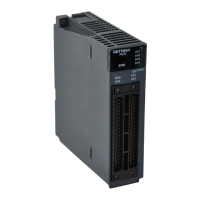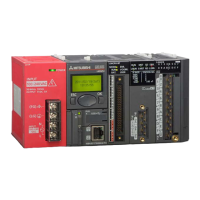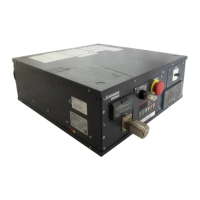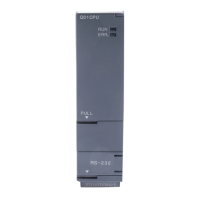3 - 7 3 - 7
MELSEC-Q
3 SPECIFICATIONS
3.2.1 Auto tuning function
(1) What is the auto tuning function?
(a) The auto tuning function is designed for the Q62HLC to set the optimum
PID constants automatically.
In auto tuning, a manipulated value turns ON/OFF and the PID constants
are calculated according to the hunting cycle and amplitude, which take
place when the measured value to a set value alternates between
overshooting and undershooting.
(b) Setting the following data with normal mode enables auto tuning to be
executed.
Buffer memory address (Decimal)
Buffer memory address name
CH1 CH2
Input range 32 64
Set value (SV) setting 34 66
AT differential gap 46 78
AT additional lag 47 79
AT bias 53 85
Note that since actual control starts on completion of auto tuning, the
other data should be preset to the values used for actual operation.
Buffer memory address (Decimal)
Buffer memory address name
CH1 CH2
Upper output limiter 42 74
Lower output limiter 43 75
Output variation limiter 44 76
Sensor compensation value
setting
45 77
Primary delay digital filter setting 48 80
Forward/reverse action setting 54 86
(c) On completion of auto tuning, calculated values are set to the following
buffer memory addresses.
Buffer memory address (Decimal)
Buffer memory address name
CH1 CH2
Proportional band (P) setting 35 67
Integral time (I) setting 36 68
Derivative time (D) setting 37 69
Loop disconnection detection
judgment time
59 91
: As the loop disconnection detection judgment time, a value twice greater than
the calculated integral time is set. However, the loop disconnection detection
judgment time remains unchanged from 0 when it is 0 at an auto tuning start.
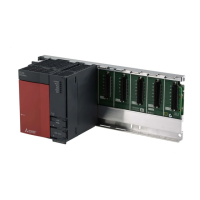
